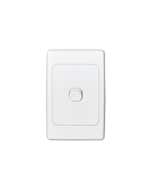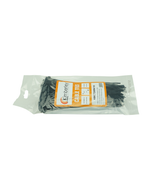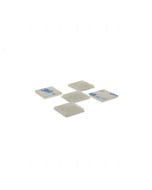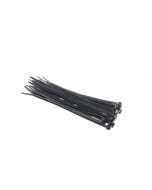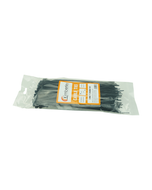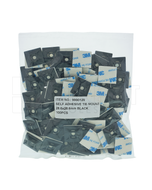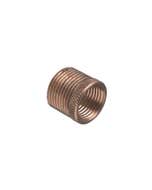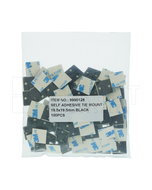Conduit Saddle
Brand Name: Clipsal
Type: Half
Nominal Size: 20 mm
Length: 50 mm
Height: 22 mm
Width: 19 mm
Hole Size: 5 mm
Clipsal Saddle Conduit Half 20Mm H/Dip Galv - 180HD20
This item is currently available for backorder with an estimated arrival time of 2 days
Please note this ETA is provided to us by our suppliers and could potentially be delayed due to factors outside our control. If there are any delays we will contact you to keep you updated.
Choose your style, Select your Switch and Checkout
We can customise your powerpoint to a range of colours and layouts, suited to your needs.
Clipsal Saddle Conduit Half 20Mm H/Dip Galv - 180HD20

| SKU | CLI180HD20 |
|---|---|
| Supplier No | 180HD20 |
| EAN / Barcode | 9311554038311 |
| Width | 19 |
| Height | 20.000000 |
| Length | 50.000000 |
| Width | 18.000000 |
| Brand | Clipsal |
| Nominal Size | 20mm |
| Hole Size | 5 mm |
A FEW FAQS
Issue: 9001KM transformer light module VA Rating? Product Line: Push Buttons and Operator Interface Environment: Harmony Pushbuttons Cause: Product Features Resolution: 9001 KM2 110-120 volt 25-30 hertz 2.2 VA 9001 KM1 110-120 volt 50-60 hertz 2.4 VA 9001 KM3 208-220 volt 50-60 hertz 2.5 VA 9001 KM4 220-240 volt 25-30 hertz 2.2 VA 9001 KM7 220-240 volt 50-60 hertz 2.0 VA 9001 KM8 277 volt 50-60 hertz 2.4 VA 9001 KM5 380-480 volt 50-60 hertz 2.8 VA 9001 KM6 550-600 volt 50-60 hertz 2.5 VA
Issue: N/A Product Line: Altistar 48 Environment: Altistart 48 Cause: N/A Resolution: ATS48 has a control supply and a power supply. On the Y range, you have a control supply that is 110-220 and the power supply is 208-690V. Y range is dedicated for the US market, with NEC standard soft starter that must be protected against the current unbalance. Y range has three current sensors,. There are only 2 on the Q range (one more OLF on the Y range). On Q range, the control supply is 220-415V and the power supply is 230-415V.
Issue: Viewing a Pelco camera image in the NetBotz Advanced View or the web UI causes a performance issue on the NetBotz appliance. Product Line: NetBotz Environment: NetBotz 4.x NetBotz Advanced View Supported Pelco Cameras Cause: Viewing a Pelco camera image in the NetBotz Advanced View or the web UI using any resolution other than the resolution that matches the setting on the Pelco camera causes a performance issue on the NetBotz appliance. The NetBotz appliance must use more processing power to re-size the image when you view the image with mismatched settings. Example: The Pelco camera resolution is set to 1280x720. When you view the image at 1280x720 in the Advanced View or the web UI, there are no noticeable performance issues. When you view the image at 320x240 in the Advanced View or the web UI, the interface responsiveness becomes very slow. Resolution Make sure the resolution set in the Advanced View or web UI matches the resolution set on the Pelco camera.
Metering Units represent the secondary values for the current and voltage transformers. That is Metering Units are the values present at the voltage and current inputs at the back of the meter. As an example, if the PTs (voltage transformers) have a ratio of 480:120 and the CTs (current transformer) have a ratio of 300:5; and you were injecting full secondary values (120 Vl-l and 5 A) for all three phases you would see the the following values: kw A = 120 V * 5 A = 600 W = 0.600 kW kw B = 120 V * 5 A = 600 W = 0.600 kW kw C = 120 V * 5 A = 600 W = 0.600 kW kw total = 0.600 kw + 0.600 kw + 0.600 kw = 1.80 kw *note: these calculation assume a unity power factor *note: Metering Units can sometimes be referred to as "uncompensated" or "unscaled" values. Last Revised: October 3, 2012 Public All content © 1992-2012 Schneider Electric Legacy KB System (APS) Data: RESL188299 V3.0, Originally authored by KBAdPM on 10/04/2007, Last Edited by MaTh on 10/10/2012 Related ranges: ION8800, ION8600, ION7550/ION7650, ION7300
Issue User may need to use PTs when installing the EM4900 series meters and may not know that they do NOT have the option to program PT ratios in their configurations. Product Line EM4900 Environment Installation Cause BCPM and EM4900 series meters do not have the option to program PT ratios in their configurations. Resolution The user may use PTs to step down the input control power and measurement voltages as required, but will need to compensate for the ratios when reading the meter's outputs, in the case of the measurement voltages. For example, if a PT of ratio 480:120 is used, one will need to multiply all the output values, with the exception of the current, by a factor of 4. Kindly refer to the link below for the EM4900 series documentation: FA324770
Issue A user may want to know the PT primary and secondary values for a CM4000 upon initial setup Product Line CM4000 Environment Setup Cause The meter may be set to "No PT" or the PT ratio may be used. Resolution When setting the PT ratio, one may select "No PT" for the PT Primary Scale - there is no requirement to set the PT ratio if "NO PT" is chosen. The PT Primary and PT Secondary inputs are still available, but they are not used when "No PT" is selected for the PT Pri Scale. A user would set the PT ratio to "No PT" when the system voltage used by the load to be metered is the same as the system voltage connected directly to the meter (i.e. direct connect with no potential transformers used). The PT ratio needs to be set only when the load is using a different voltage from the meter voltage inputs (i.e. potential transformers are being utilized). Potential transformers are used when the voltage of the electrical system is higher than the rated specifications of the meter voltage inputs. The PT primary and secondary ratio on the meter should match that of the potential transformers in the field. Example 1: When metering a 1.2 kV system with a set of PT's that contain a ratio of 1200:120, the PT Primary of the meter should be set to 1200 and the PT Secondary of the meter should be set to 120. (Potential transformers are used in this scenario because 1.2 kV exceeds the acceptable voltage input threshold the CM4000 can withstand (1-690 L-L, 400 L-N) Example 2: When metering a a 480V L-L system, no PT's are being used. The system voltage is directly connected to the metering inputs. In this scenario, you would set the PT Pri Scale of the meter to "No PT". Note: If the meter receives voltage that is the same as the voltage used by the load and "No PT" is NOT selected, then a PT ratio of 1:1 would need to be used and is still acceptable. (i.e.This result can be achieved by setting the PT Ratio to 120:120 or 480:480)









